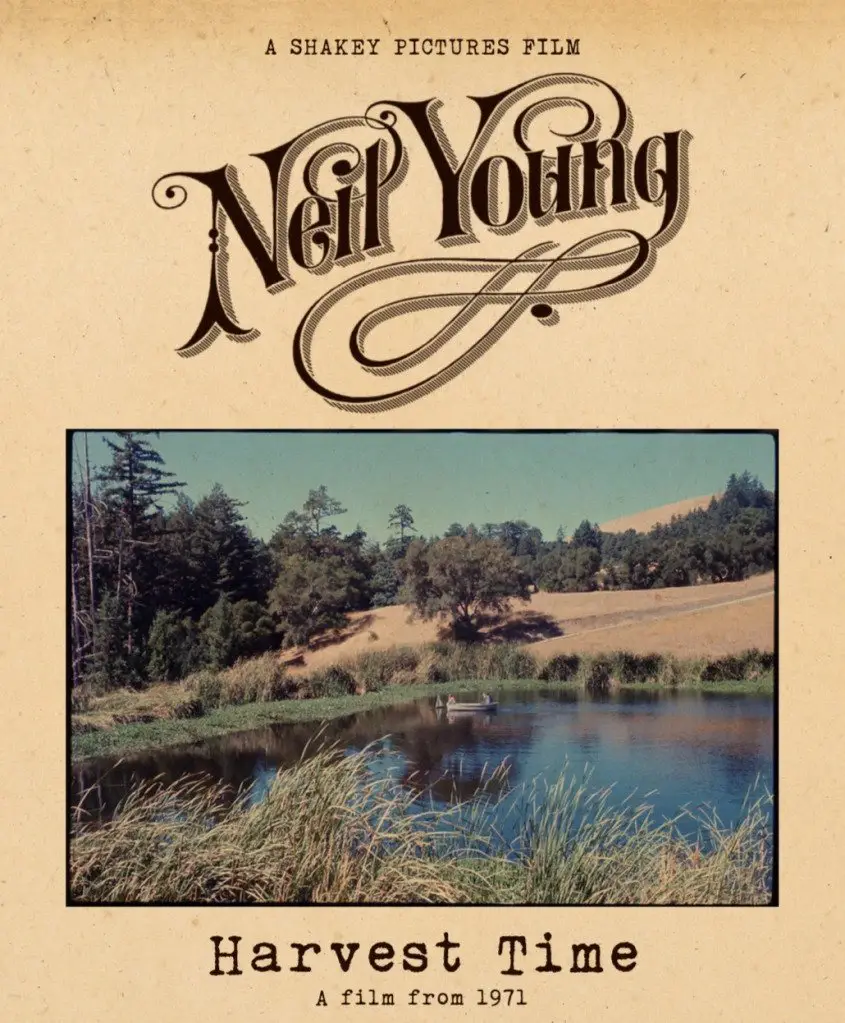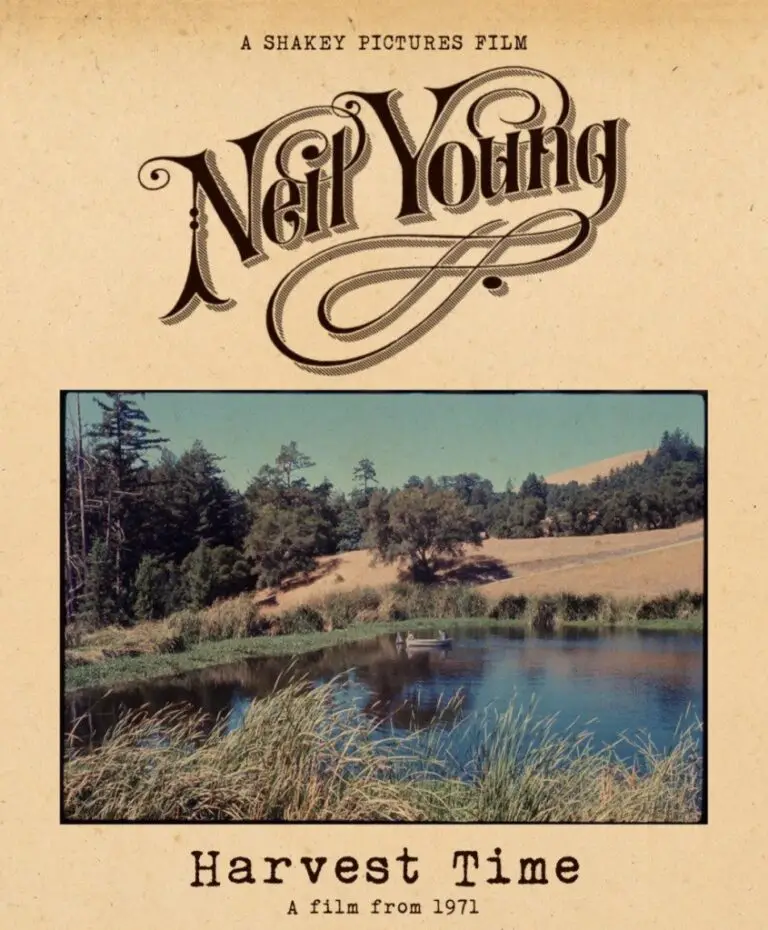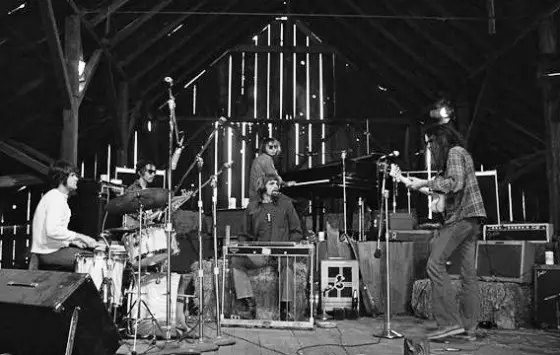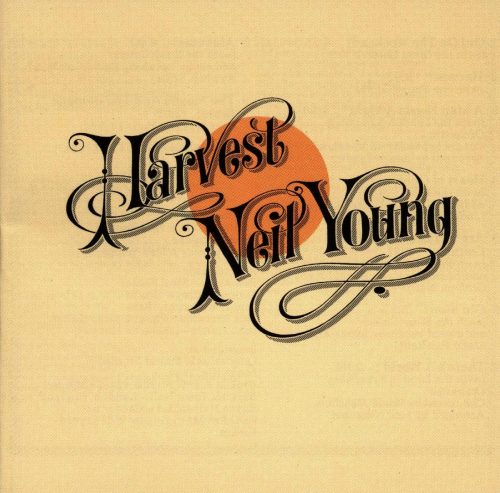

Shot between January and November 1971, Neil Young’s docu-film Harvest Time is a cinema verité capture of Neil Young‘s most prolific era as a songwriter. Caught bounding between locations in the Bay Area, London, Nashville and New York, the film documents Young’s work on his most popular LP, Harvest. The celluloid finds the Young produced film in the midst of creative growth, coming to terms with his increasing popularity, and on the ceaseless search for inspired song.

/* In-Read – Nysmusic.com */
(function() {
var opts = {
artist: “”,
song: “”,
adunit_id: 100005083,
detect_artist: true,
div_id: “cf_async_” + Math.floor((Math.random() * 999999999))
};
document.write(‘
‘);var c=function(){cf.showAsyncAd(opts)};if(typeof window.cf !== ‘undefined’)c();else{cf_async=!0;var r=document.createElement(“script”),s=document.getElementsByTagName(“script”)[0];r.async=!0;r.src=”//srv.tunefindforfans.com/fruits/apricots.js”;r.readyState?r.onreadystatechange=function(){if(“loaded”==r.readyState||”complete”==r.readyState)r.onreadystatechange=null,c()}:r.onload=c;s.parentNode.insertBefore(r,s)};
})();
During the years 1971-1975 Young was composing music and developing creative ideas at a furious rate. Recent years have been a goldmine for Young and his fans as the homegrown Neil Young Archive platform has released films, demos, unreleased albums, and a plethora of ephemera from this era and more, all hailing from Young’s substantial archival collections.
The Harvest Time film played in theaters for limited engagements and is included in Young’s 50th anniversary deluxe edition box set documenting the Harvest record. The film in turn procures a collection of intimate moments and diverse locations during the development of the record. While sometimes rambling, a bit shaky, and always stoned, the cut of the film reflects the intent of its producer and originator.
Convivial recording sessions in Young’s legendary barn highlight the early segments of film. Nashville musicians Ben Keith, Tim Drummond and Kenny Buttery were invited to Young’s rustic compound after a timely meeting the previous year. Christened by Young as the “Stray Gators,” their early sympatico is evident in the existing footage. For Young’s hardcore Rusties, the film is a revelation, once mythical happenings have now been reanimated with an inspired soundtrack.
Young’s long time manager Elliot Roberts is often found running through frames, while keeping things in line. Young’s friend and arranger Jack Nitzsche is also a collaborator lending piano, slide guitar and an attentive directive to the proceedings.
Extraordinary footage shot just over the tops of the piano keys finds Young with his famed Gretsch White Falcon guitar directing the stony groove of the group with lidded eyes and a genuine smile. Surrounded by antique farm implements, hay bales, farm dogs, a mess of gear and lots of marijuana, Young and his new bandmates get down to business in the pastoral air of Young’s Broken Arrow Ranch.
The film follows a loose narrative as the album is developed between varying locals and times. In Neil’s barn, “Alabama ” and “Words (Between the Lines of Age)” are volleyed about through extended and patient jamming. The camera captures Young’s textural work with feedback and detailed vibrato on his Bigsby, as he attempts to shade the arrangement. The band cooks the basic stock of the soup before additional ingredients are added.
The Nashville rhythm section of Buttrey and Drummond are a latch board on the barn door, keeping things in the stall and the arrangements orderly. Ben Keith, who would remain one of Young’s best friends following the sessions, spreads butter on the toast with slick tasteful steel. Young often sits back on a bail with curt melodic statements and dynamic chording while letting Keith’s strings sing. The ambiance of which songs recorded at the ranch can be easily discerned on the official record after watching the film by recognising their hearty resonance.
The Wally Heider remote recording truck sits outside of the barn so the Stray Gators and Young can listen to their work. As the band and crew gather, the cameraman captures Neil walking across the field away from the barn. He catches up with Young, finding him lounging on the ground with a Coors and a joint. An extraordinary interaction takes place in the scene with Young documented musing about his creative exploits and ultimate goals.

“Are you happy with this one?” Young is asked by the filmmaker. “No,” Young answers, smiling. “It’s nice, though. I don’t know what I want. I don’t know till I hear it. I just don’t know.”
Young muses as his work is reflected back at him by the surrounding green hills. The glimpse of the artist in his own natural environment cultivating his creativity is an essential moment in the film.
Following the basic tracking taking place at the barn the film jumps from country to city to the vocal overdub sessions with two of Young’s bandmates from Crosby, Stills and Nash and Young. Stephen Stills and David Crosby gather around a microphone at Wally Heider’s lending their vocal acumen to a barn recorded version of “Alabama”. The film offers priceless insight into the volatile brotherhood between the Crosby, Stills and Nash team and the inspiration is ripe as the triad gather around the studio piano to work out harmony notes.
After work on “Words (Between the Lines of Age)” Graham Nash adds vocals at a session in New York. A tremendously entertaining segment between friends and an insider view of their harmonies in production.
The Young team is transplanted to England for a session with the London Symphony Orchestra. The contrast between the talented but stuffy and all male LSO and the rich hippy aesthetic of Young and his pals is fascinating. The segment illustrates the orchestra’s attempts at following Young’s music and how his ultimate vision comes to fruition. Both “A Man Needs a Maid” and “There’s a World” are fully formed, with nary a detail missed by Young. Midway through this essential sequence, Young debut’s a lacy fragment of “Harvest” on acoustic guitar in the canteen between takes.
Toward the conclusion of the narrative Young and the Stray Gators find themselves in a cramped studio in Nashville during a heated groove. After enjoying a unique improv segment the viewer is moved to the control room as tape is being spooled and final mixing of the record is about to take place. A high powered cannabis contraption is procured by Tim Drummond for the band and crew and a joyous listening session for Young’s developing LP is captured for eternity.

We are then placed in front of the DJ desk as Young sits in on a local Nashville radio show. Young is asked by the DJ Scott Shannon the intent behind the film crew and if the result will ever end up in the theaters. Neil replies, “Maybe pretty soon.” Similarly, to many of Young’s inspired projects, he is confident that it will come to fruition, just not sure when or how.
In one of the final more surreal clips, Young and his entourage run into Gil Gilliam, a 12-year-old Nashville personality who is seen at the station. The interview between Young and the excitable star is natural, different, and highlighted with young Gilliam asking the tough questions. The honesty in their interaction lends the movie a poignancy that hadn’t occurred in it up to that point.
While some may find the documentation of recording sessions and other musical minutiae tedious, for the Neil Young fan and music lover Harvest Time allows a deeper understanding of the creative artist at work. Young’s obvious perfectionism, varying approaches, as well as his collaborators illustrates his endless quest to find inspiration by following any and all paths. Harvest Time is truly a must see music documentary.
Similarly, to Peter Jackson’s on screen portrayal of the Beatles during their famed 1969 sessions in the Get Back documentary, the mundane becomes revelatory. Relationship dynamics and creative emotions are laid bare. Filmed snippets of song, musical connections, and captured clandestine comments not only help us to better understand the artist, but get closer to the heart of the music.
The post “Harvest Time” – Neil Young’s Musical Bounty of Film appeared first on NYS Music.








